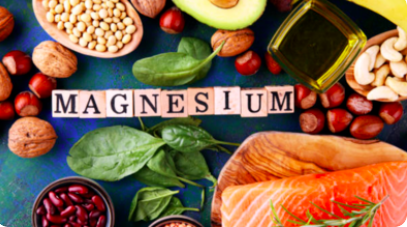Health
Can body Pain Make You Tired?

Last Updated on June 6, 2022 by Nurse Vicky
Can body Pain Make someone Tired?
The words tired and fatigue are often used interchangeably, but the distinction between the two is important.
While tired is a natural state of tiredness, fatigue is sleepy.
This feeling often means you have an underlying problem like anemia or depression.
But what if the underlying cause is something more serious? Is fatigue a sign of an illness?
Or is it just a way of saying you’re “over it?”
Fatigue is a persistent feeling of tiredness or lack of energy

If you’re tired all the time, you’re probably suffering from fatigue.
While some causes of fatigue can be treated, others require medical intervention.
In either case, lifestyle changes can help you manage the symptoms and get back to living a fulfilling life
. However, if you’re experiencing persistent fatigue, a medical checkup is necessary.
Read on to learn how you can get back on track.
The most common causes of fatigue are physical conditions, such as chronic fatigue syndrome and chronic pain.
Sometimes, a person’s fatigue symptoms occur after strenuous exercise or mental stress.
This type of fatigue may last for a week or longer.
For example, a person suffering from depression may experience fatigue symptoms after a long day of work or activity.
Fortunately, the Mayo Clinic offers a free health information newsletter that can provide valuable information about fatigue.
It is a symptom of chronic pain

Chronic pain can leave you feeling drained and exhausted.
Tiredness from pain can affect your mood and motivation.
It can also manifest as physical symptoms like achy or heavy limbs.
This symptom is closely linked to your chronic pain condition.
Sleep is another important aspect of your health, as your pain may affect your ability to sleep.
If you have difficulty sleeping, your chronic pain could be the cause of your tiredness.
During times of chronic pain, many people may feel exhausted despite their best efforts.
They may spend most of their day merely getting by, and they may struggle to plan their day ahead. Luckily, understanding how fatigue affects chronic pain can help you plan for the future.
To begin, consider what causes your tiredness.
A lack of sleep may contribute to fatigue and weak muscles.
If you find that this is happening to you, it is time to seek treatment.
It is a sign of anemia

If you have been feeling tired and lethargic for no apparent reason, it may be an indication of anemia.
However, if you are experiencing shortness of breath when climbing stairs, or if your mind wanders, it may be a sign of something else.
Anemia is caused by an abnormality in hemoglobin, the substance that carries oxygen throughout your body.
Without adequate hemoglobin levels, your organs will slow down and you may experience other symptoms such as headaches, shortness of breath, or chest pain.
Iron is absorbed in the gastrointestinal tract, where it is stored until needed to make new red blood cells.
The body needs a certain amount of iron in order to function properly, and anemia makes it difficult for your body to get the proper amount of oxygen and blood to your entire body.
A lack of iron results in fewer healthy red blood cells, which means less hemoglobin carrying oxygen throughout your body.
A lack of red blood cells can result in tiredness, weakness, and inability to concentrate. Fortunately, anemia is treatable with the right care.
It is a symptom of depression

Fatigue is a common occurrence in depressed individuals.
This ailment may affect many aspects of your life, including your ability to perform everyday tasks, your weight, and your cognitive function.
is also linked to depression and lack of sleep.
In addition, fatigue may exacerbate your feelings of hopelessness and loneliness, and make it difficult to separate them from normal, everyday fatigue.
Fortunately, there are ways to differentiate between the two.
Depression is closely related to pain.
The muscles of the scalp and neck are sensitive to pain, and people with depression often subconsciously tense them.
A person suffering from depression may have trouble getting out of bed or may experience extreme fatigue and sleeplessness throughout the day.
Insomnia and sleeplessness are also common signs of depression.
Although depression can make you feel tired and rundown, it is important to note that this symptom is not a sign of mental illness itself.
It is a symptom of insomnia
Aside from pain, other sleep-related symptoms may occur with insomnia.
Pains related to arthritis, fibromyalgia, and migraine are common with insomnia, and some people may experience generalized muscle pain while sleeping.
Pains are often co-morbid with other conditions, such as depression, anxiety, smoking, or lack of physical activity.
Pains related to insomnia may even be the result of a condition, such as depression.
Research has shown that at least 50 percent of chronic pain patients have difficulty sleeping.
Most chronic pain patients exhibit symptoms of insomnia.
Insomnia can worsen pain symptoms, so understanding the root causes of chronic pain is vital for treating insomnia.
Chronic pain is also a common cause of sleep disturbances.
For this reason, the best way to treat pain is to address the underlying causes.
Chronic pain and insomnia go hand-in-hand. It is important to recognize the difference between feeling fatigued and being physically ill.
While the former is often resolved by taking a nap or a good night’s rest, the latter is usually indicative of a more serious condition.
Even if you do feel tired and sleepy, you may feel temporarily rejuvenated after some exercise.
However, if you are feeling fatigued and lethargic for days on end, you may have an underlying illness that requires more extensive treatment or a change in your lifestyle.
Chronic fatigue and pain can also be symptoms of depression.
When they happen on a regular basis, it can negatively impact your quality of life. Seeing a health care provider for an evaluation may help identify the cause and make suggestions to help you overcome your condition.
Your doctor may suggest tests to check for an underlying medical condition or suggest lifestyle changes that may help
. Chronic fatigue may disappear over time, but the symptoms of chronic pain and illness may recur.
Health
7 Fascinating Facts About Magnesium You Probably Didn’t Know

7 Fascinating Facts About Magnesium You Probably Didn’t Know
Magnesium is one of the most essential minerals for our health, yet many people are unaware of its significance.
This vital nutrient plays a crucial role in numerous bodily functions, from energy production to maintaining a healthy heart.
In this article, we will delve into seven intriguing facts about magnesium that may surprise you and help you appreciate its importance in your daily life.
What is Magnesium?
Magnesium is a naturally occurring mineral found in various foods and is vital for human health.
It is the fourth most abundant mineral in the body and is involved in over 300 biochemical reactions.
Magnesium contributes to nerve function, muscle contraction, blood sugar control, and blood pressure regulation.
It can be obtained from various dietary sources, including leafy greens, nuts, seeds, whole grains, and legumes.
1. Magnesium is Involved in Energy Production
Did you know that magnesium is essential for converting food into energy? This mineral plays a critical role in the activation of ATP (adenosine triphosphate), the energy currency of our cells.
Without sufficient magnesium, your body struggles to produce energy effectively, which can lead to feelings of fatigue and weakness.
How Does It Work?
ATP production occurs in the mitochondria, often referred to as the powerhouse of the cell.
Magnesium helps activate enzymes involved in this energy production process, ensuring that your body has enough energy to perform daily activities.
2. A Key Player in Bone Health
Magnesium is vital for maintaining strong and healthy bones. Approximately 60% of the magnesium in your body is stored in your bones.
It contributes to bone density and strength by regulating calcium levels in the body, which is crucial for bone formation.
The Calcium Connection
Calcium is often touted as the primary mineral for bone health, but magnesium plays an equally important role.
An imbalance of these two minerals can lead to bone-related issues such as osteoporosis.
Ensuring adequate magnesium intake is essential for maintaining optimal bone health.
3. Supports Heart Health
Magnesium is a crucial mineral for cardiovascular health. It helps maintain normal heart rhythms and can reduce the risk of heart disease.
Adequate magnesium levels are associated with lower blood pressure and reduced risk of heart attacks.
Regulation of Blood Pressure
Magnesium helps relax blood vessels, which can lead to lower blood pressure.
Studies have shown that individuals with higher magnesium intake tend to have better cardiovascular health. Including magnesium-rich foods in your diet can be an effective strategy for supporting heart health.
4. Magnesium and Mental Health
Emerging research suggests a strong link between magnesium levels and mental health.
Magnesium plays a role in regulating neurotransmitters, which are essential for mood stabilization.
Low magnesium levels have been associated with an increased risk of depression and anxiety.
Cognitive Function
Magnesium may also enhance cognitive function. Studies have indicated that adequate magnesium intake can improve memory and learning abilities.
This mineral is essential for brain health, making it vital for overall mental well-being.
5. Magnesium Deficiency is Common
Despite its importance, magnesium deficiency is surprisingly common.
Factors such as poor diet, chronic stress, and certain medical conditions can lead to low magnesium levels.
Symptoms of magnesium deficiency can include muscle cramps, fatigue, and irritability.
Risk Factors for Deficiency
Certain populations are at a higher risk for magnesium deficiency, including the elderly, those with gastrointestinal diseases, and individuals who consume a diet low in whole foods.
It’s essential to recognize the signs of deficiency and consider increasing your magnesium intake through diet or supplements if necessary.
6. Natural Relaxant
Magnesium is often referred to as a natural relaxant due to its calming effects on the nervous system.
It helps regulate cortisol levels (the stress hormone) and promotes relaxation, making it beneficial for those dealing with anxiety and stress.
Improving Sleep Quality
In addition to its relaxing properties, magnesium can improve sleep quality.
Many people find that magnesium supplements help them fall asleep faster and stay asleep longer, making it a popular choice for those struggling with insomnia.
7. Magnesium in Sports Performance
Athletes and active individuals often benefit from magnesium’s role in muscle function and recovery.
Magnesium helps prevent muscle cramps and can aid in post-exercise recovery by reducing inflammation and promoting relaxation.
Enhancing Athletic Performance
Research has shown that adequate magnesium levels can enhance athletic performance.
It is involved in muscle contraction and relaxation, making it essential for peak performance during exercise.
Conclusion
Magnesium is a powerhouse mineral that plays an essential role in various bodily functions. From supporting energy production to promoting heart health and mental well-being, its importance cannot be overstated.
Ensuring adequate magnesium intake through a balanced diet rich in whole foods can significantly enhance your overall health and quality of life.
If you suspect you may be deficient in magnesium, consider consulting with a healthcare provider to assess your levels and discuss dietary changes or supplements that may be beneficial.
FAQs about Magnesium
1. What are the best dietary sources of magnesium?
The best sources of magnesium include leafy green vegetables (like spinach), nuts (especially almonds and cashews), seeds (such as pumpkin seeds), whole grains (like brown rice and quinoa), and legumes (like beans and lentils).
2. How much magnesium do I need daily?
The recommended daily intake of magnesium varies by age and gender. Generally, adult men should aim for about 400-420 mg per day, while adult women should aim for about 310-320 mg.
3. Can I take magnesium supplements?
Yes, magnesium supplements are available and can be beneficial, especially for individuals who may not get enough from their diet. However, it’s essential to consult with a healthcare provider before starting any supplement regimen.
4. What are the symptoms of magnesium deficiency?
Symptoms of magnesium deficiency can include muscle cramps, fatigue, weakness, irritability, and irregular heart rhythms. If you experience these symptoms, consult a healthcare professional.
5. Is it possible to get too much magnesium?
Yes, while magnesium from food sources is generally safe, excessive supplementation can lead to toxicity, causing symptoms like diarrhea, nausea, and abdominal cramping. Always consult a healthcare provider before increasing your magnesium intake significantly.
References:
Health
Whooping Cough: Understanding Its Resurgence and Prevention

Health
The Power of Beans: Why This Superfood is a Nutritional Treasure
-

 Trending Stories1 year ago
Trending Stories1 year agoCDC: 1 in 4 Americans Still COVID-Free by End of 2022
-

 Health5 years ago
Health5 years agoMeghan Trainor Shares Motivational New Song ‘Blink’
-

 Health6 months ago
Health6 months agoHow Do Pawpaw Seeds Support Cardiovascular Health?
-

 Health2 years ago
Health2 years agoHow Long Does Monkey Pox Last Before It Surfaces in the Body?
-

 Health3 years ago
Health3 years agoWhat Causes Swollen Body? Understanding Edema and its Triggers
-

 Health3 years ago
Health3 years agoNutrition and the Importance of a Fitness Program – 3 Things to Know
-

 Health3 years ago
Health3 years ago5 Weird Reasons Why Pimples Disappear After Marriage
-

 Health2 years ago
Health2 years agoHealth Benefits Of Pawpaw Seed? 7 Things To Know






